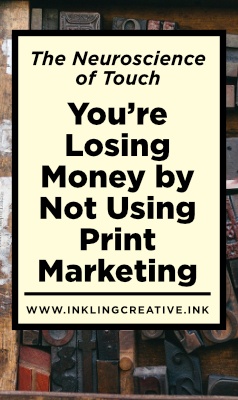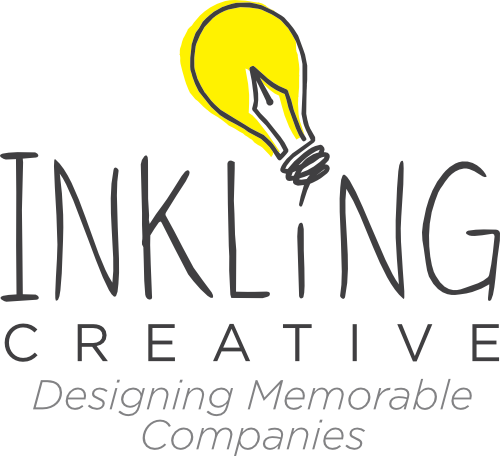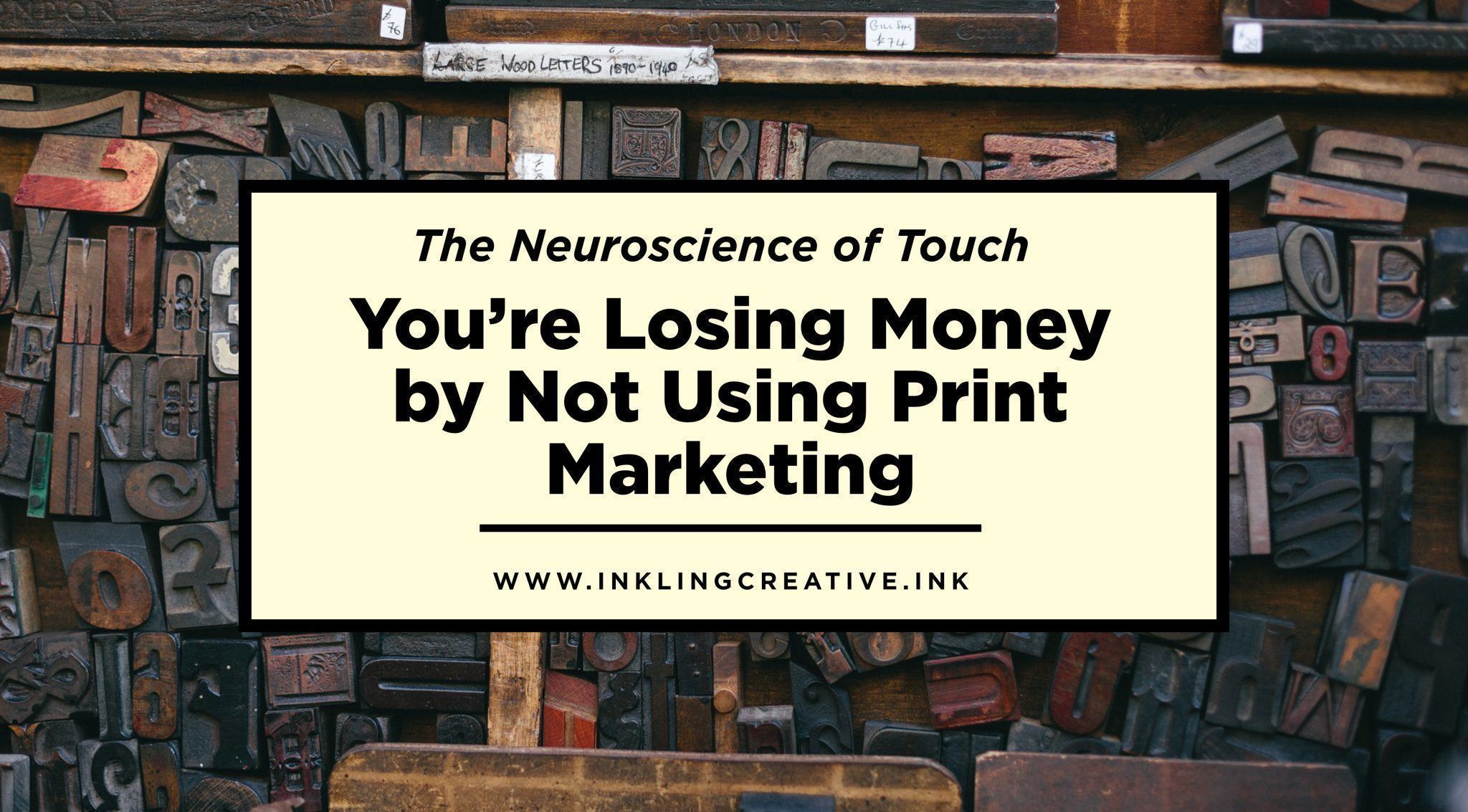People want to sell you stuff.
To do that, they do market research to learn common mindsets. Our mindset is the views that we hold towards a subject. Marketers use their knowledge of these common attitudes to influence how they market. This is called neuromarketing, or the application of neuroscience to marketing (Canada Post).
You never thought marketers would use neuroscience, did you?
Would you rather watch it? Click above to view.
And this is what we want to discuss in this next series of posts: the neuroscience of print.
More...
One thing we may not realize is that we have different mindsets when it comes to different types of marketing. And that’s what I want to talk about. The mindset with which we approach print marketing is vastly different from that with which we approach digital marketing. Why is that? And how does that show itself?

As a traumatic brain injury (TBI) survivor, I think this is fascinating - and may be the reason why I find print so engaging. But as you'll learn, print isn't just more effective for TBI survivors.
The mindset with which we approach print marketing is vastly different from that with which we approach digital marketing.
Why is Print Marketing Different than Digital Marketing?
The Canada Post gives us some insight when they tell us, “while the digital space provides essential platforms for customer interaction, physical media is better suited to close the marketing-sales loop, or the gap between interaction and action.”
Essentially, they are saying that digital mediums help close the communication gap between customer and company. On the other hand, print helps close the gap between that communication and purchases made. The point?
Print helps your company's bottom line.
When the Canada Post did this study, they did it with direct mail specifically. They found that physical, printed products (in this case, mail) are more action-oriented than their digital counterparts. This is because the physical format stimulates our brain to guide our behavior.
Digital media informs customers. Printed media stimulates and guides customers to purchase.

This study focused on media, or an advertisement’s, effectiveness in two areas: ease of understanding and persuasiveness.
The Neuroscience of Print
In this in-depth study, brain imaging metrics (EEG and eye-tracking) were used to study the brain’s response. Three areas and different methods of stimulation were studied in conjunction with these different marketing methods:
Cognitive Load
“Cognitive load” measures how easily a message is understood. It’s the mental effort required to understand a message. This is important because a lower cognitive load means a message is easier to understand. A message that makes sense right away is more quickly transferred to long-term memory.

But cognitive load must be considered in terms of motivation. If a message is easy to understand but not motivating, it’s still not a very effective message.
Motivation
To understand a message’s persuasiveness, neuromarketers measure the subject’s motivation. Motivation is the feeling that urges and drives decision-making. And when you are attracted to something, you’re much more likely to act on it.
Visual Attention
Along with an advertisement’s cognitive load and motivation, researchers also measured the visual attention advertisements produce. This is what the eye is drawn to in an advertisement. When measured with motivation and cognitive load, visual attention often indicates how someone feels about an advertisement. It also indicates how quickly a message is understood and absorbed.
Print helps close the gap between communication and purchases made.
Using the above measurements, researchers found four main results (aside from these) of print marketing and direct mail:
1
Direct mail is more memorable and easier to understand than digital advertisements.
It requires 21% less effort to process. It also brings about a much higher brand recall.
2
Direct mail is more persuasive than digital advertisements — by a lot.
The motivation and response of direct mail recipients was 20% higher. If the mail involved senses beyond touch (scent, special effects, etc) it was even higher.
3
Direct mail and printed materials are visually processed faster than digital media.
This suggests that the message of a printed advertisement gets across much faster than messages in digital advertisements.
4
Direct mail and printed advertisements are more likely to drive behavior (and thus, sales) than their digital counterparts.
This is because printed marketing surpasses the prediction of how successful an advertisement is.
After seeing these results, I’m not trying to convince you that digital advertising is ineffective and should be forsaken. That’s obviously not the case. But these details do show us something that is obvious:

Studying the neuroscience of print means companies must consider direct mail and printed marketing materials.
When we examine the effectiveness of print marketing, we see great impact on the brain. As we examine its overall effectiveness, we realize that advertising through print is not simply a way of the past. The neuroscience of print — and new printing technology — makes it a way of the future.
If your company needs someone to partner with for your print advertising needs, consider Inkling Creative. We’d love to work with you to make your company memorable.
If you are convinced you need print marketing, but don’t have the resources to hire it out, check out my course, Attract + Transform. I teach you the skills and resources you need to attract your customers and transform your company.
What are your thoughts? Is print is more effective at reaching you? I would love to hear what you think.
If this subject interests you, join my newsletter to get updates and notifications of when new blogs are posted.


where is the share button?
Thank you for your concern and pointing that out! My share buttons are at the top left side along the blog. The reason you didn’t see them before is because the share icons were orange also (on an orange background) – so you couldn’t see them.
Thanks for pointing that out! It should work now!